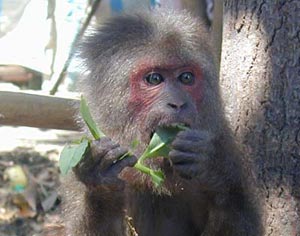Chư Yang Sin National Park (Đăk Lăk) has recently been discovered by scientists to host numerous globally significant conservation species.
 |
| The red-faced monkey, one of the rare species discovered in Chư Yang Sin National Park. |
On April 17, the BirdLife International program in Vietnam, in collaboration with the Global Environment Facility and the World Bank, announced findings from Chư Yang Sin National Park (Đăk Lăk Province). The park is home to the Dalat pine, flat-leaved pine, black-shanked douc, red-faced monkey, long-tailed monkey, a population of gaur (Bos gaurus), and a potential new species of shrew.
Notably, the pristine vegetation stretches from elevations above 8,000m to the peak of Chư Yang Sin, remaining largely undisturbed.
All of these flora and fauna are confirmed to be rare and hold global conservation value.
However, Chư Yang Sin National Park is currently facing threats from local communities, particularly due to trapping and hunting activities carried out by H’Mong hunters who have migrated from the northern mountainous regions.
Chư Yang Sin National Park is a sanctuary for many valuable animal species and endemic plants, including a variety of precious medicinal plants.
Covering an area of over 58,900 hectares, Chư Yang Sin National Park ranks fifth among the 102 protected forests in Vietnam and is recognized as one of the internationally significant ecological regions for biodiversity.
The park comprises more than 50 mountains of various sizes, all originating from the Chư Yang Sin range, with elevations ranging from 450 to 2,442 meters.
Thu Linh

















































